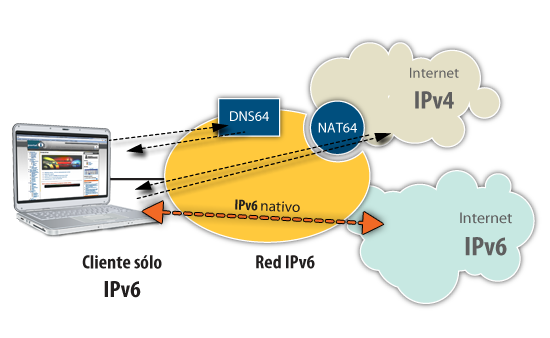Translation
In this case a device on the network converts IPv4 packets into IPv6 packets and vice versa. The device must be capable of performing this translation both ways so that bidirectional communication between end hosts is possible.
Examples of this are NAT64/DNS64, where the network is native IPv6 and, in order to reach IPv4-only sites, a NAT-type translation is performed by mapping IPv6 and IPv4 packets. A special prefix is used to map IPv4 addresses into IPv6 addresses: 64:ff9b::/96. A modification to DNS, called DNS64, is also needed. DNS64 synthesizes an AAAA record even when no IPv6 address is found for the destination host (i.e., when the DNS only replies with A-type records).

It is worth mentioning that one of the original proposals for a translation mechanism was NAT-PT (RFC 2766), which due to its shortcomings has been deprecated (RFC 4966) and moved to “historic” status by the IETF.